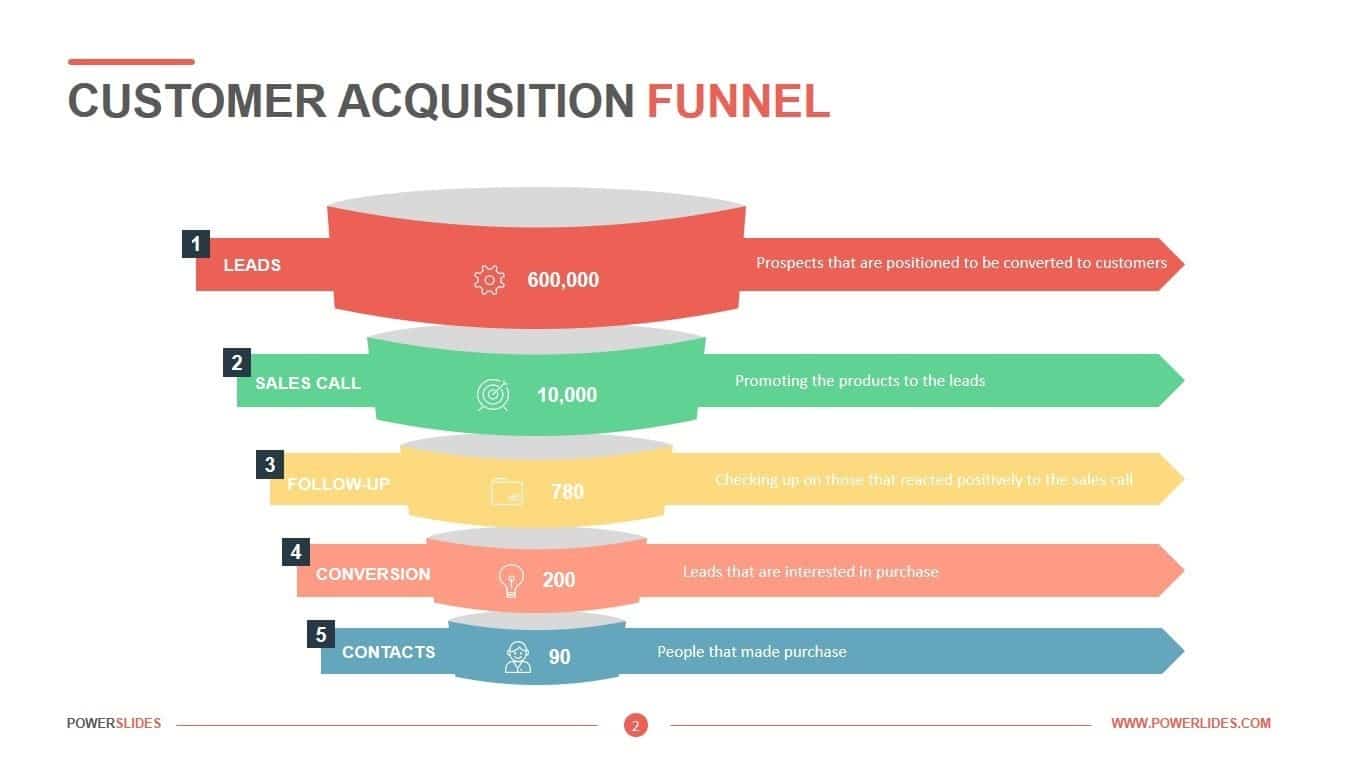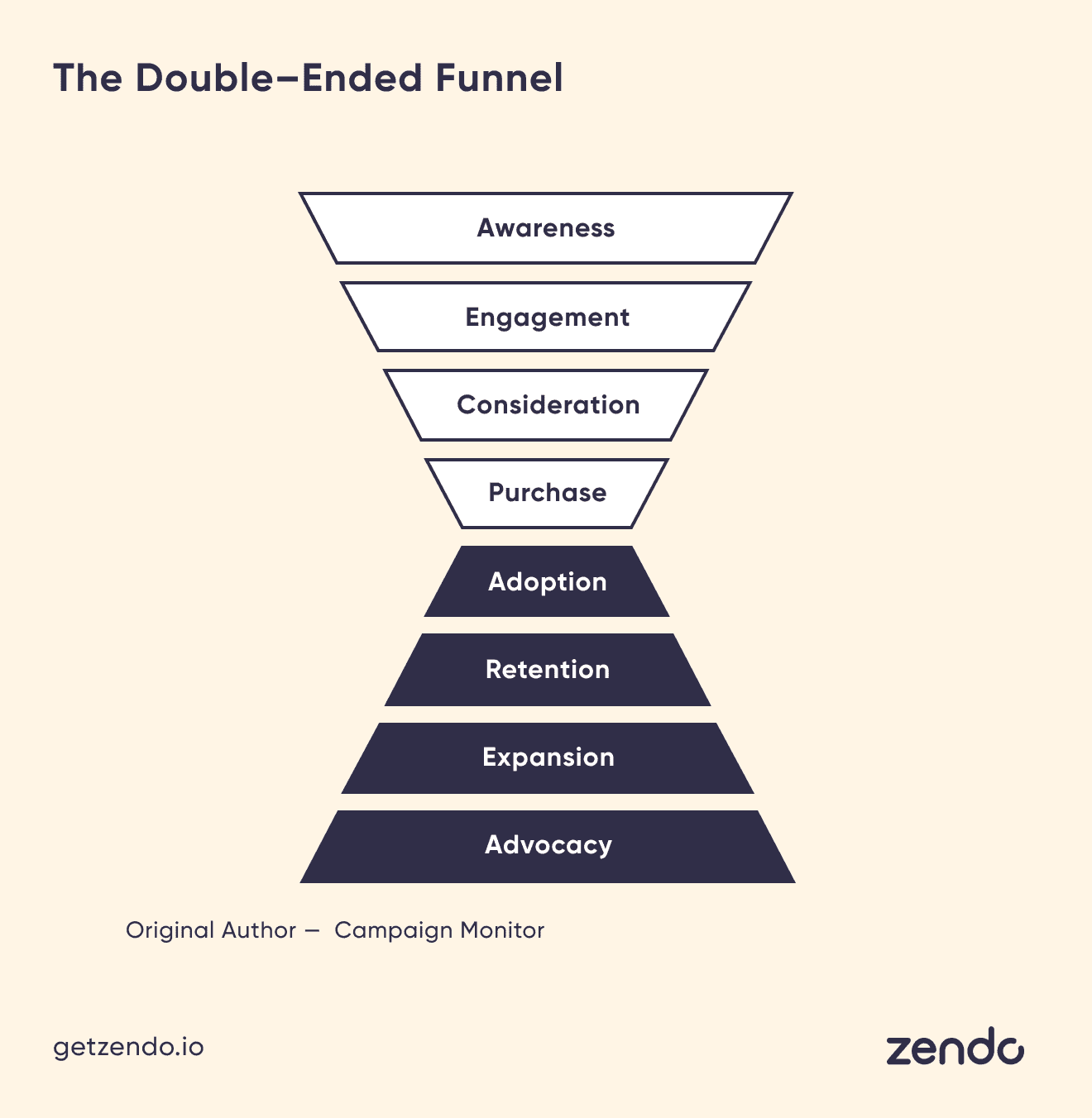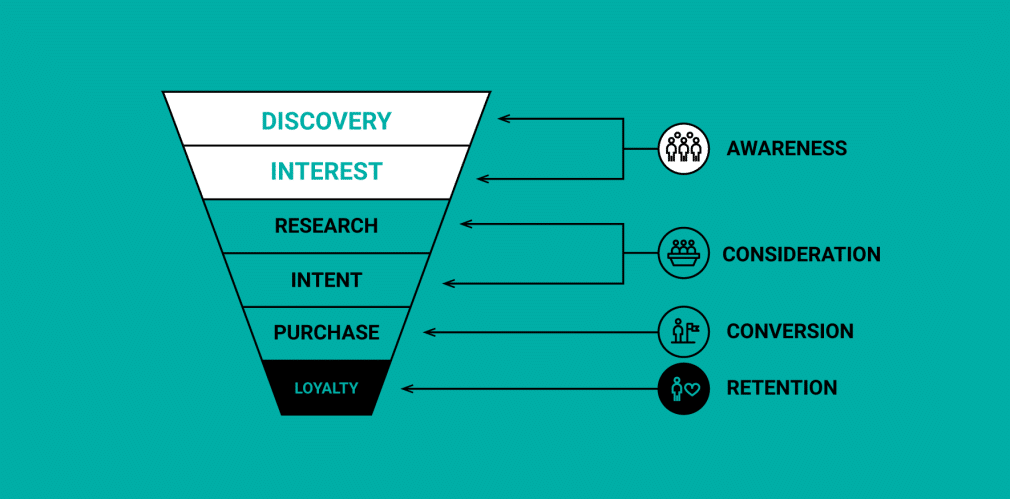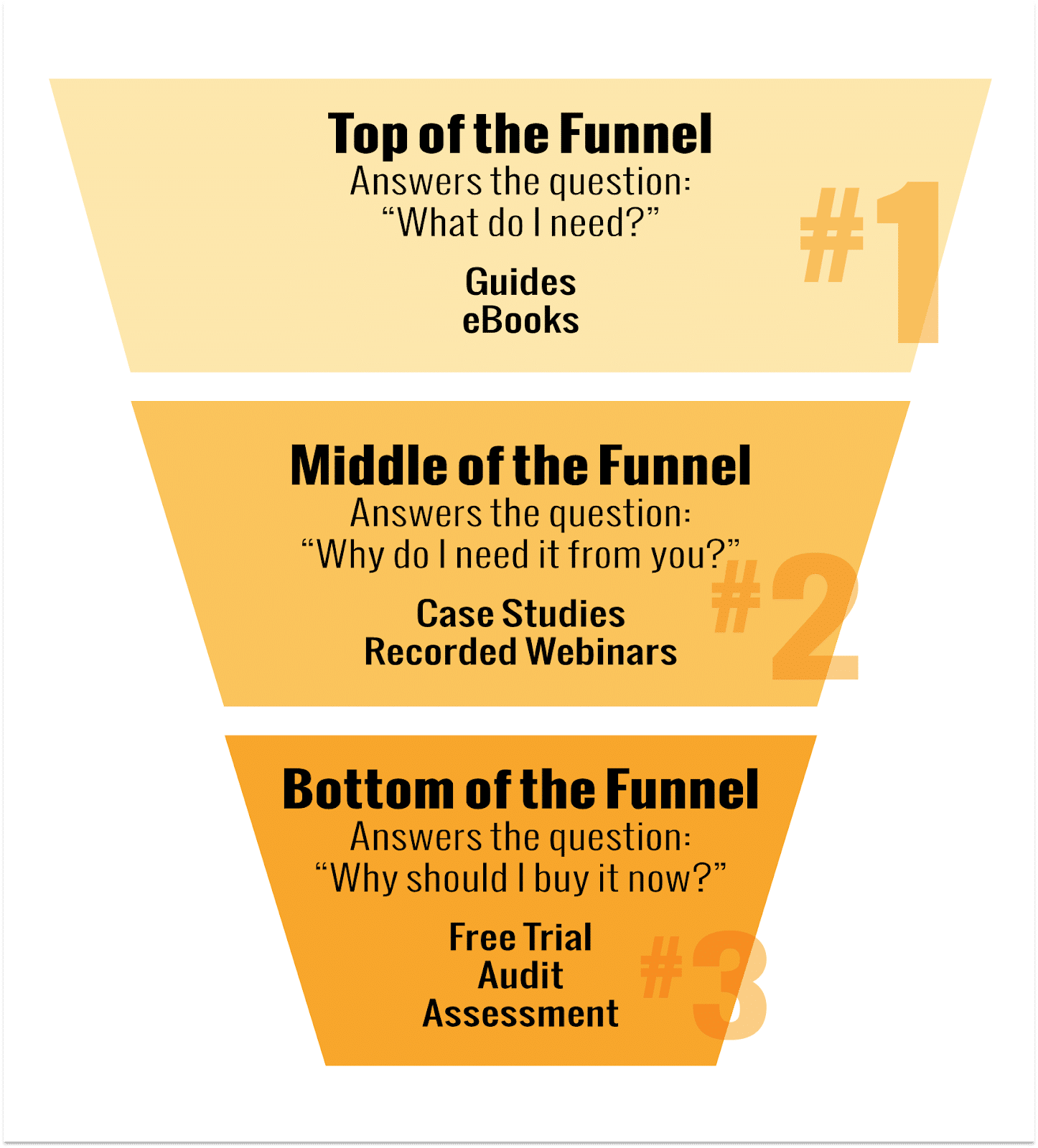Customer Acquisition Funnel: Guide for B2B Marketing
Updated on 15th July, 2024
The online marketing space is heating up because of ever-growing competition, and with marketing strategies improving frequently, the quest for acquiring new customers and retaining the old ones is getting tougher.
While there are many potential customers available in the online space, those that match your Ideal Customer Profile are few and far between. The chances are high that your competitors are targeting them too and would take serious efforts to acquire them.
This growing struggle for acquiring customers has led to an increase of 60% in CAC in the past few years. In order to grow sustainably in the long term and lower the CAC, a business should have a predictable customer acquisition funnel, among other things.
With a well-designed Customer Acquisition Funnel, your business can keep acquiring new customers without overshooting your marketing budget.
But what is a Customer Acquisition Funnel?
Understanding Customer Acquisition Funnel
A Customer Acquisition Funnel is a model that visualizes the framework of acquiring new customers and retaining the existing ones. With this model, you can track and monitor every component of your customer acquisition effort for its performance.
Having a visual model of a customer’s journey from being first exposed to your brand to ending up as a paying customer is a powerful asset. Humans understand and process visual information better than other forms of information, and a Customer Acquisition Funnel can help a lot to improve the Customer Acquisition Function of a business.

Image Courtesy – powerslides.com
Being able to see the entire customer acquisition process enables marketers to easily spot improvement opportunities, blockages, weak spots, risks, and leakages. Moreover, having a clear idea of how leads flow through the Customer Acquisition Funnel will enable marketers to smoothen and quicken the flow of leads through the funnel.
A customer acquisition funnel also unlocks the ability of a business to be able to provide a better customer experience and a higher degree of personalization. These two factors play a big role in conversion and client retention.

Image Courtesy – getzendo.io
With a customer acquisition funnel, you’re better able to track and monitor the flow of leads, which gives you more control over them. You can prioritize high-value leads, take corrective actions for slow-moving leads, and do more things to smoothen the flow.
This is especially beneficial for B2B businesses owing to the fact that the number of leads is less and the average deal value is significantly high. Combined with regular revisions and optimizations, your business can attract more clients, convert a higher percentage of them, and effectively retain the existing ones.
Shifting your business’s focus from just sales or marketing to a systematic customer acquisition process can bring drastic positive improvements to your business.
Why is a Customer Acquisition Funnel Important?
Wouldn’t it be easier to just go about with your marketing? Well, no! Let’s learn why.
1. It Unifies Teams and Strategies towards Common Business Objectives
Aligning teams around a shared customer journey map improves collaboration and streamlines processes. This unified focus enhances the overall customer experience.
2. Uncovers Potential for Optimization
Customer journey maps identify bottlenecks and drop-off points. Thus, it highlights opportunities to improve conversion rates and overall customer experience.
3. Enables Effective Resource Allocation
Customer journey maps provide insights into performance at different stages. These insights enable data-driven resource allocation for optimization and cost-efficiency.
4. Makes Accurate Growth Projections Possible
By analyzing historical data and customer behavior, customer journey maps enable accurate growth projections, informing financial planning and resource allocation.
5. Promotes a Customer-centric Approach
By visualizing the customer journey, teams develop a deeper understanding of customer needs and experiences, A customer-centric mindset can thus be adapted throughout the organization.
Components of a Customer Acquisition Funnel

Image Courtesy – semrush.com
Awareness
This component plays the role of making a potential customer aware of your business, what products and services you offer, and what value those offerings would provide to them if they decided to make a purchase. Furthermore, this component has two sub-components:
Discovery –
This is your first contact with a potential client. A client can be introduced to your brand through various channels. The main aim here is to get as much necessary information to them efficiently and effectively.
Interest –
Through various types of marketing material published across various platforms, you aim to generate interest in the minds of potential clients about your offerings that can provide value and solutions to their business.
Consideration
By this time, your audience is interested in your offering; the next question they have is do you actually deliver the value you advertise and if so, how do you do that exactly. A potential client will try to gather all the information about your business offerings consider all their options before coming to any decision.
This component too has two additional sub-components:
Research –
If a potential customer is interested in making a purchase, they will ensure they know everything about your offerings. They will go through your product and services page pricing page, read your blogs, check for customer testimonials, check how independent reviewers have rated you, etc.
Intent –
Once a potential customer has thoroughly researched your offering, they will make the next move. They will either sign up for a free trial/product demo if your business offers one or make a purchase inquiry. There are many intent signals that customers will exhibit that would prove their interest. You can use a website tracking software like Salespanel to track these signals.
Conversion
This component always occupies the second last spot in a good Customer Acquisition Funnel. The process of conversion is not a single-step function and includes multiple steps before a client is actually convinced about making a purchase.
The process of conversion especially takes longer for the B2B segment as requirements of businesses differ from one another, and your offerings have to be tweaked a little to ensure they help realize the customer’s business objectives.
Once all the tweaks have been made, the client makes final operational inspections before finalizing the purchase. Once the purchase has been made, the product is handed over and deployed to aid the customer’s business.
Retention
The final component of any well-designed Customer Acquisition Funnel should end with this component. It is a well-known fact that retaining an existing customer is far more cost-effective than acquiring a new one.
This is especially true for B2B businesses as the B2B customers exhibit significantly higher reorder value which forms a proportionally big part of a B2B Business’s recurring revenue.
Providing a good customer experience, easy and quick troubleshooting, prompt after-sales service, personalization, etc., helps boost customer loyalty and positively adds to the customer sentiment resulting in maximized customer retention.
The above should be enough for you to understand the Customer Acquisition Funnel thoroughly. Now let us tackle the next question, how do you create an effective funnel?
Creating an Effective Customer Acquisition Funnel
The Customer Acquisition Funnel can be divided into three functional parts- top, middle, and bottom. All three parts of the funnel serve different purposes, and it is advisable to perfect each function and to ensure a good flow between them.

Image Courtesy – B2C
Let us consider the necessary steps at each level of the Customer Acquisition Funnel to ensure it is effective and performs as intended.
Top of the Funnel
Choosing the right channels –
As a B2B Business, you must be well aware of who your ideal customer is. Based on that, you should decide upon the relevant marketing channels where you’re most likely to get your ideal customer’s attention.
Choosing the right content –
Be it the type or the form of content, the main goal here is to grab their attention, make a positive impression, convey all the necessary information and raise their level of interest in your brand and its offerings.
Choosing the right marketing mix –
There are various forms of marketing, and each one has its upsides and downsides. You will have to create a marketing mix of different marketing types with the objective of reaching the right people and boosting engagement.
As you acquire leads from different channels, use first-party intent tracking and website personalization to track engagement from different channels and use the right content to engage your customers and move them through different stages of the funnel. Contact us to know how you can do this with Salespanel.
Middle of the Funnel
Asserting Expertise –
It is necessary to convince your audience that you’re an expert in the field in which you operate. This can be done by publishing relevant blogs, case studies, tutorials, and other content your audience can assess to validate your expertise.
Competitor Analysis –
Knowing what your competitors are offering in terms of value, solutions, or pricing is important as you will have to position your offerings as ones offering better value than that of your competition to appeal to your audience.
Building Brand Advocacy –
Merely offering the best deal isn’t enough. Clients won’t trust your claims unless someone reputed backs those up. Having your offerings reviewed by independent reviewers or having industry influencers as brand advocates helps solve this issue.
Bottom of the Funnel
Facilitate Purchase Decision –
Instilling confidence in the buyer’s mind about the performance of your offerings is necessary. This can be done by offering demos and free trials. Moreover, to raise the level of assurance, you can offer a money-back guarantee if the customer isn’t satisfied with the purchase.
Catering to after-sales requirements –
Prompt after-sales service is a must to build a loyal customer base in the long term. Tending to the customer queries, assisting in troubleshooting, helping minimize downtime, etc., and other activities can be undertaken to ensure this.
Implementing a client retention strategy -Retaining old customers is as important as acquiring new ones. This can be done by building a strong long-term relationship with existing customers by creating a community of customers, hosting events, one-on-one engagement, offering additional assistance such as free inspection, calibrations, etc.
A loyal customer base is a powerful asset for any business as these customers not only promote your brand but also act as brand advocates to assure new buyers about the value you offer to their business and the benefits they stand to gain.
4 Powerful Tips for Creating an Effective Customer Acquisition Funnel
1. Understand your Target Audience
Defining and understanding your target customer is fundamental to building a successful customer acquisition strategy. Pinpointing their specific needs and preferences is crucial for developing marketing and sales efforts that resonate and convert.
2. Provide a Compelling Value Propositions
A compelling value proposition is crucial for differentiating your business from competitors. Clearly communicate the unique benefits your product or service offers to convince target customers to choose you.
3. Optimize your User Acquisition Funnel
Your customer acquisition funnel is the roadmap to converting potential customers into paying clients. By mapping out this journey, you can track progress, identify bottlenecks, and refine your strategy for maximum impact.
4. Strong and Effective CTAs
A compelling call to action is essential for driving customer movement through your acquisition funnel. It should be clear, concise, and persuasive, encouraging the desired next step.
With that, we’re at the end of our learning journey. Let’s conclude!
To Conclude
Shifting the focus to strategic acquisition using a customer acquisition funnel will not only acquire new clients in a cost-effective way but retain the old ones effectively too. It is a predictably working system that will scale as your business scales.
Sell more, understand your customers’ journey for free!
Sales and Marketing teams spend millions of dollars to bring visitors to your website. But do you track your customer’s journey? Do you know who buys and why?
Around 8% of your website traffic will sign up on your lead forms. What happens to the other 92% of your traffic? Can you identify your visiting accounts? Can you engage and retarget your qualified visitors even if they are not identified?


